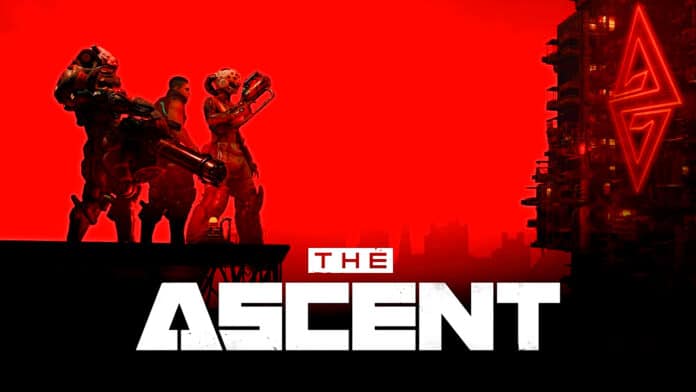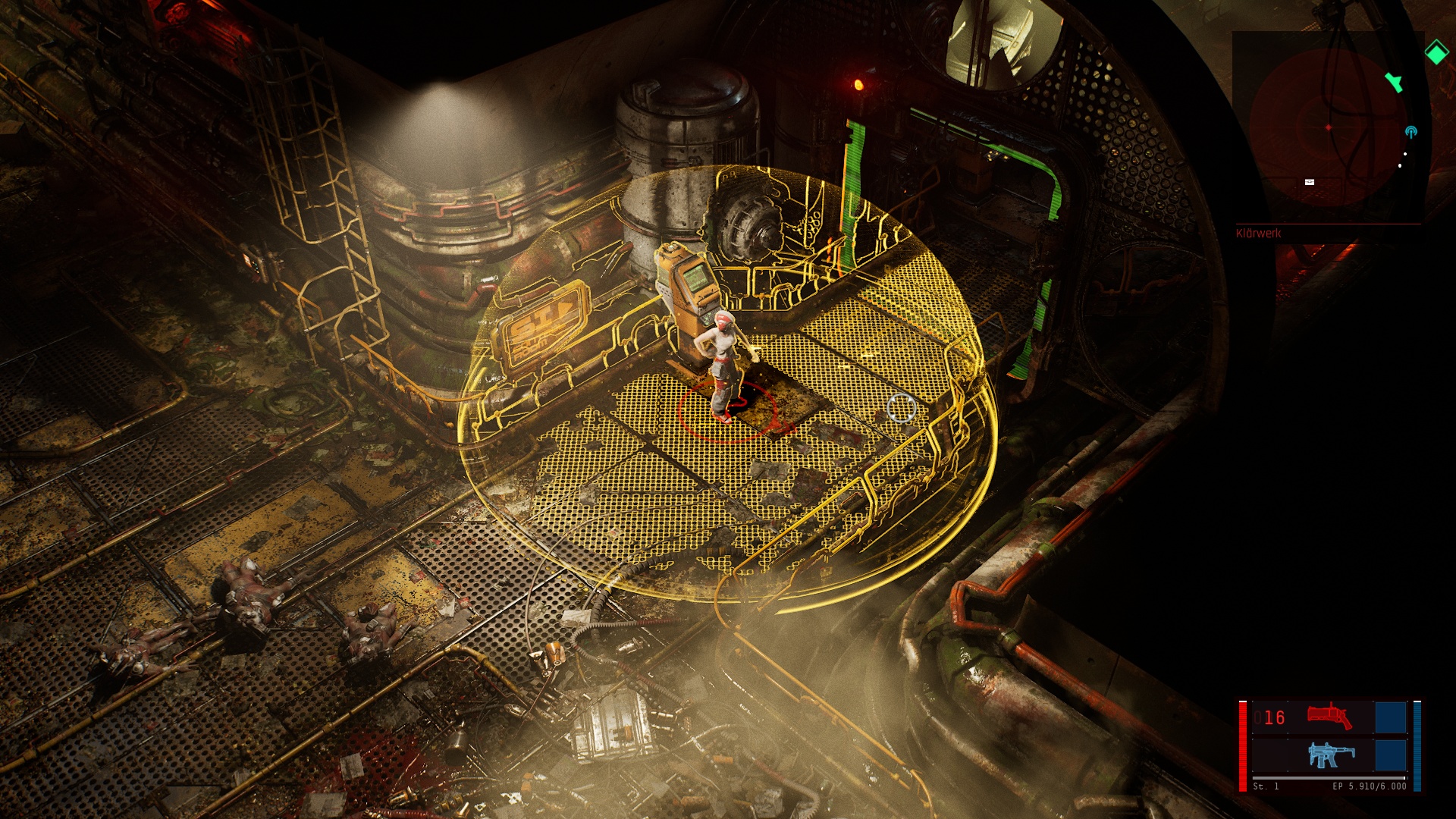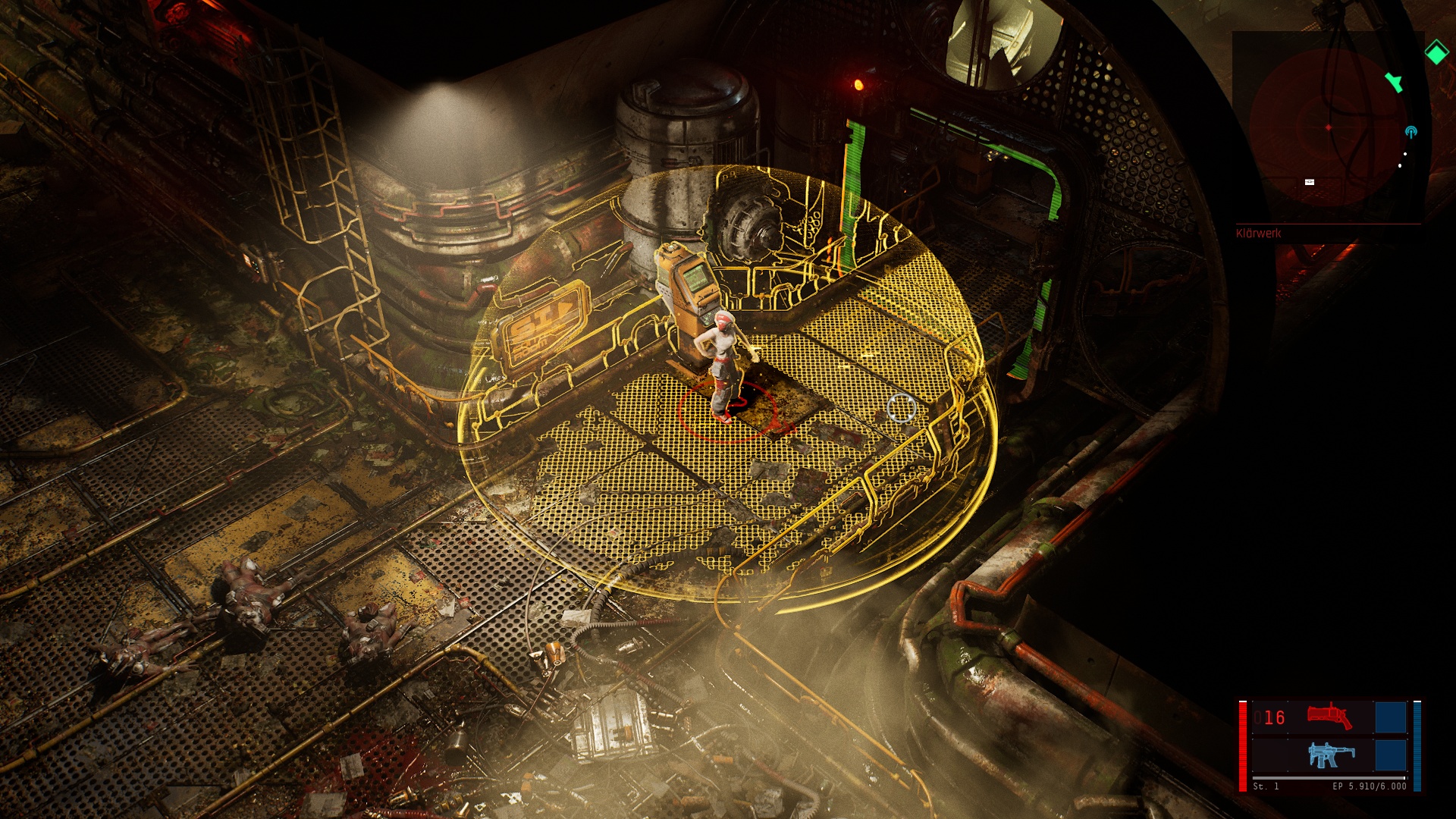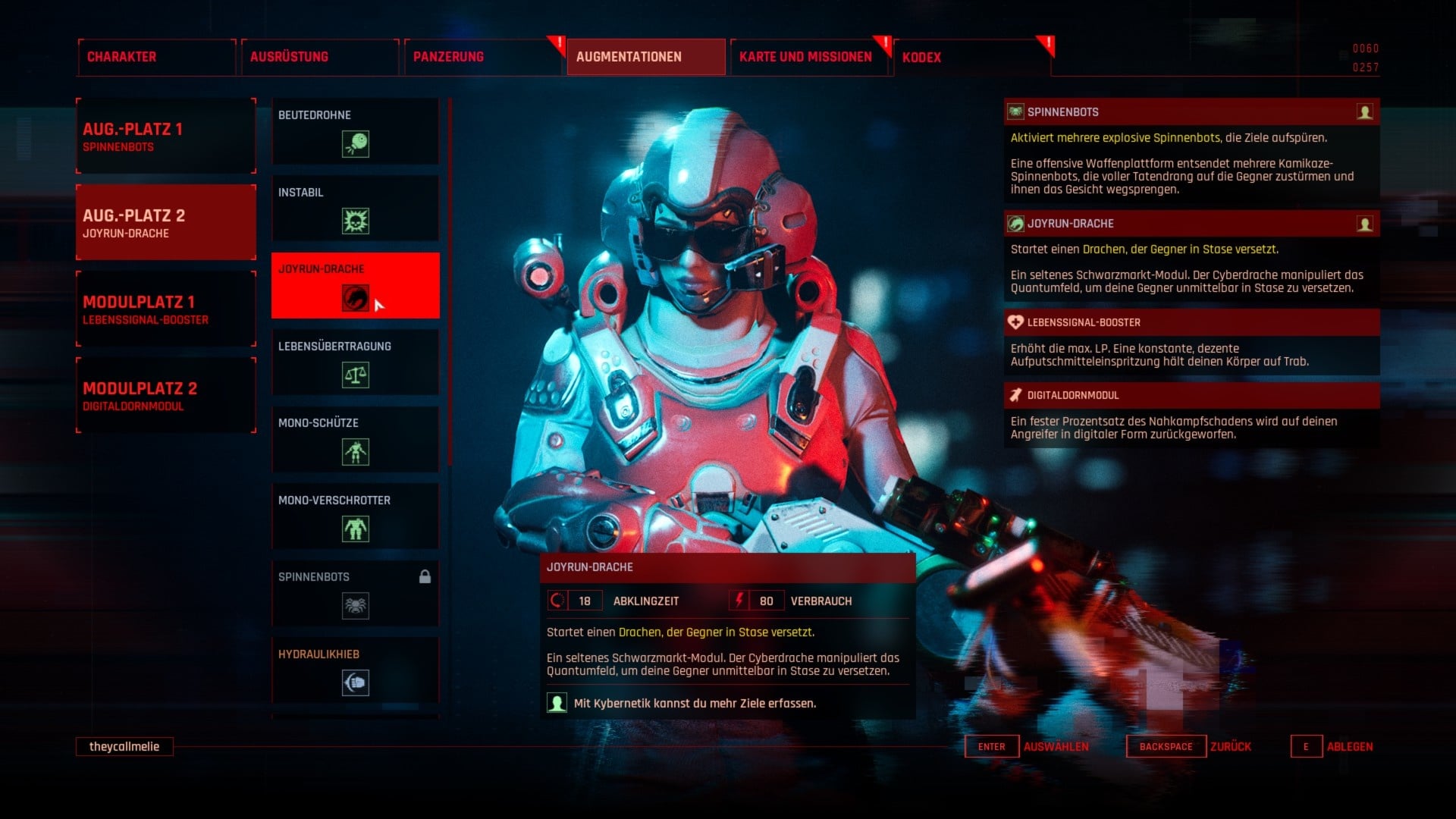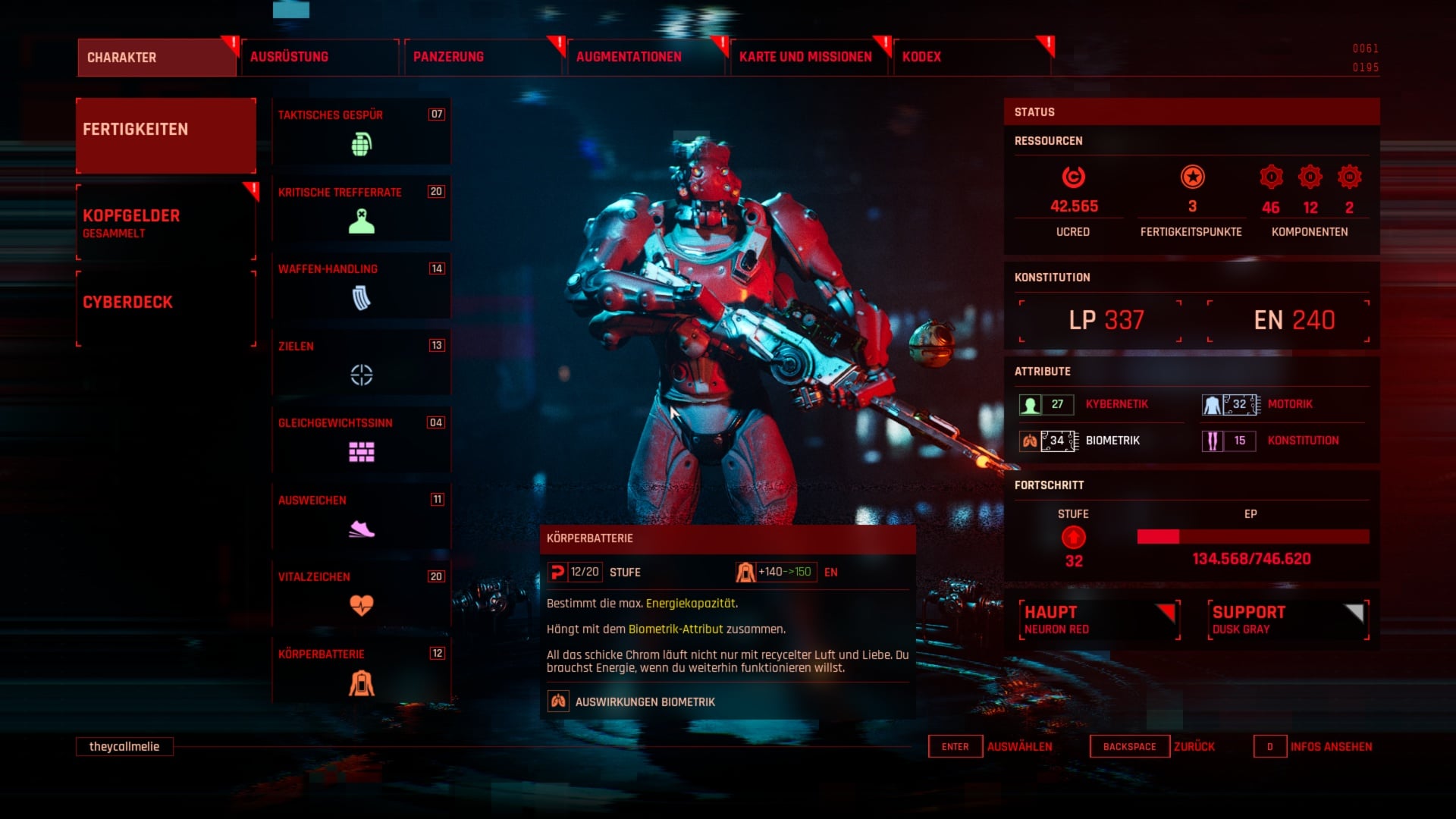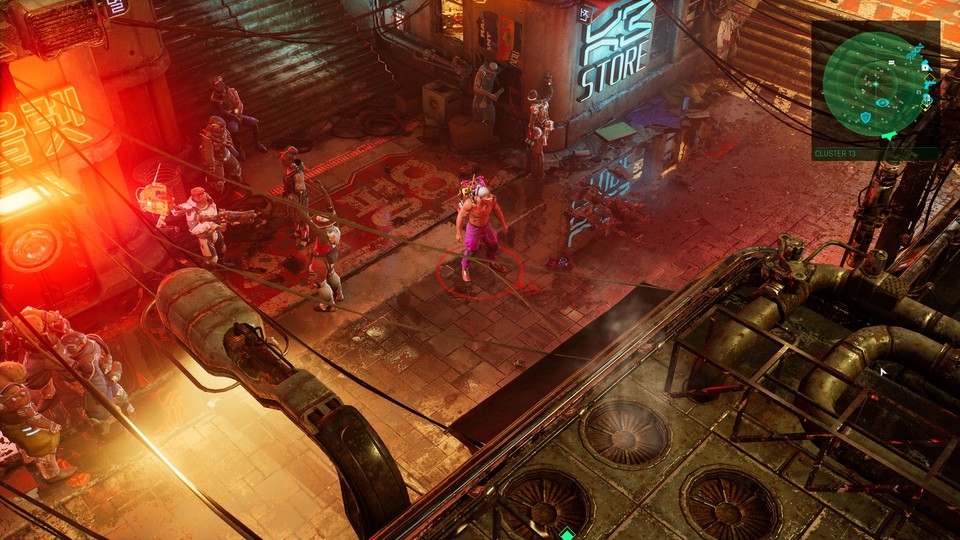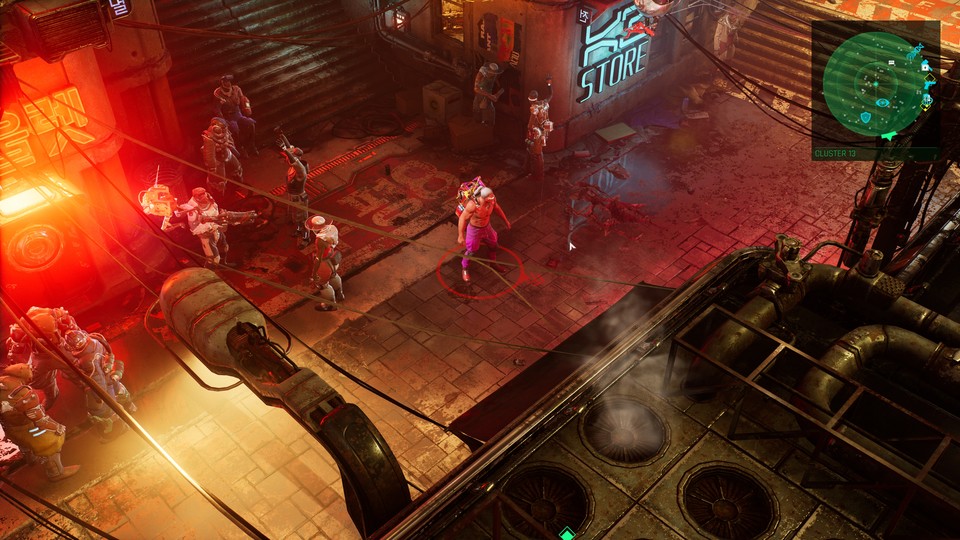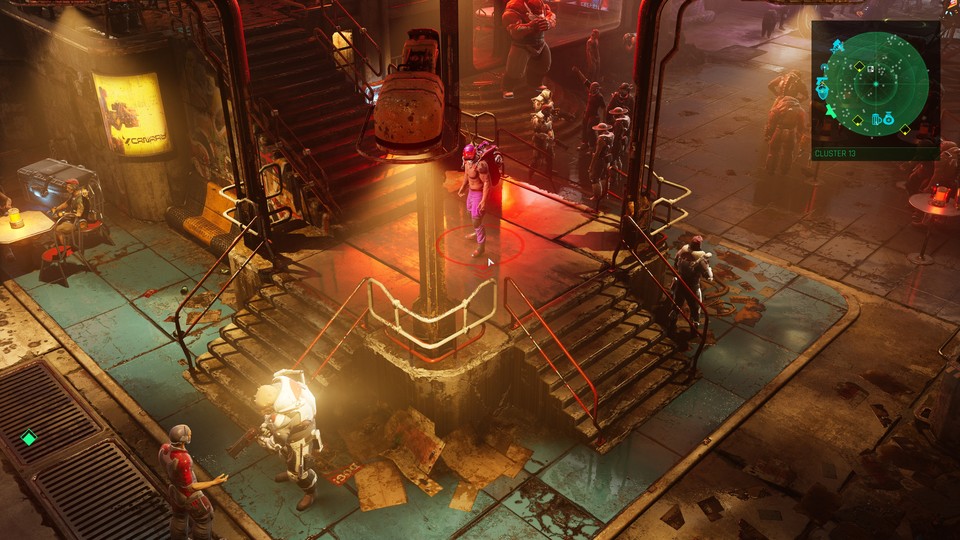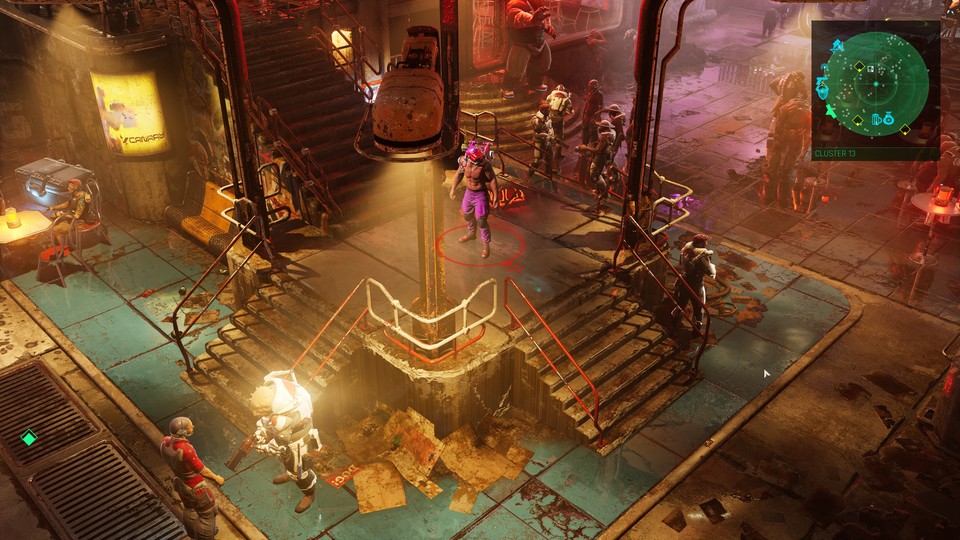It could have been one of the best action role-playing games of the year, because The Ascent has all the prerequisites: fantastic graphics, ray tracing, exciting ideas. But now the hack & slay fails because of the technology of all things.
When testing The Ascent, we are overcome by a sense of déjà vu: the release of a hopeful game with a cyberpunk setting and grandiose ideas is overshadowed above all by an unfinished state and technical problems.
Yet there is so much potential in The Ascent. The firearms bring a welcome change from conventional hack & slay battles and demand a tactical approach from the player. Unlike the action RPG top dog Diablo, the developer studio Neon Giant relies on completely handmade levels, creating an atmosphere that is dense enough to cut through. What’s more, the cyberpunk game looks simply fantastic!
It hurts all the more that The Ascent only reveals a fraction of this potential in the test and always puts stumbling blocks in its own path.
Table of Contents
The Ascent is a graphics dream
It’s easy to fall in love with The Ascent at first sight. The beautiful graphics go hand in hand with the developers’ attention to detail, setting the dystopian tone of the cyberpunk game. Garish neon lights reflect in the puddles.
Billboards lure you into seedy and dodgy bars. The walls covered in graffiti tell of the people’s discontent. The pills scattered in the toilets speak of their desperation.
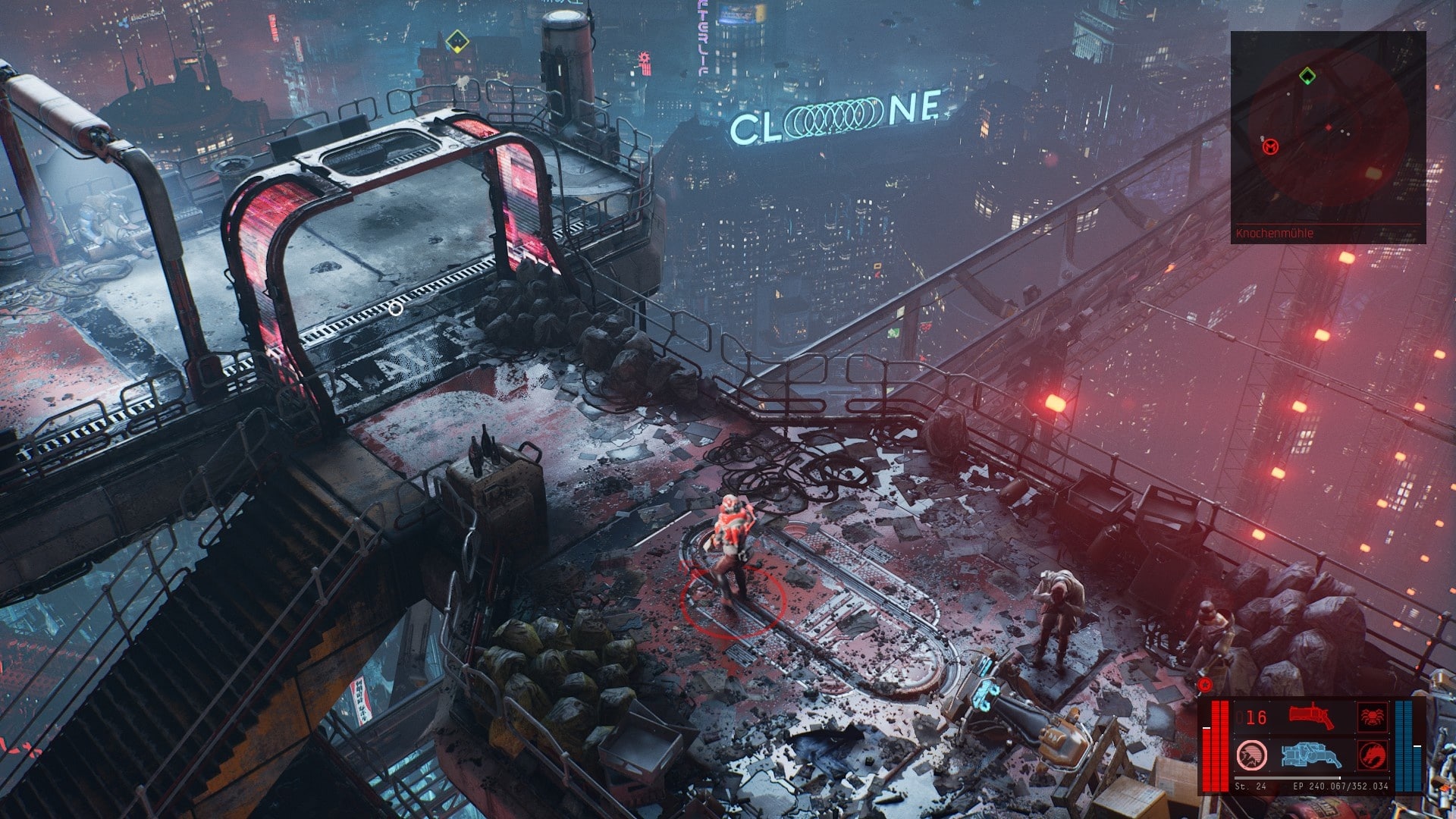
Outside the Cluster 13 residential area, the game world tells a different story. The Golden Satori casino thrives on the excess of its visitors. The Asian gardens bear witness to order and discipline. The hypnotic lights of the disco allow you to fade out the madness on the streets for a short time. Ray tracing makes it even more beautiful. In our test version, however, ray tracing caused crashes and jerks. You can read more about this in our technology assessment below.
There are so many details in the game world of The Ascent. It’s almost a shame that we aren’t tempted more often to pause and soak up the atmosphere. The action role-playing game bleeds cyberpunk and adds its own touch to the setting. For not only humans exist on the planet Veles, but also all kinds of alien races. However, all this functions primarily as a pretty backdrop.
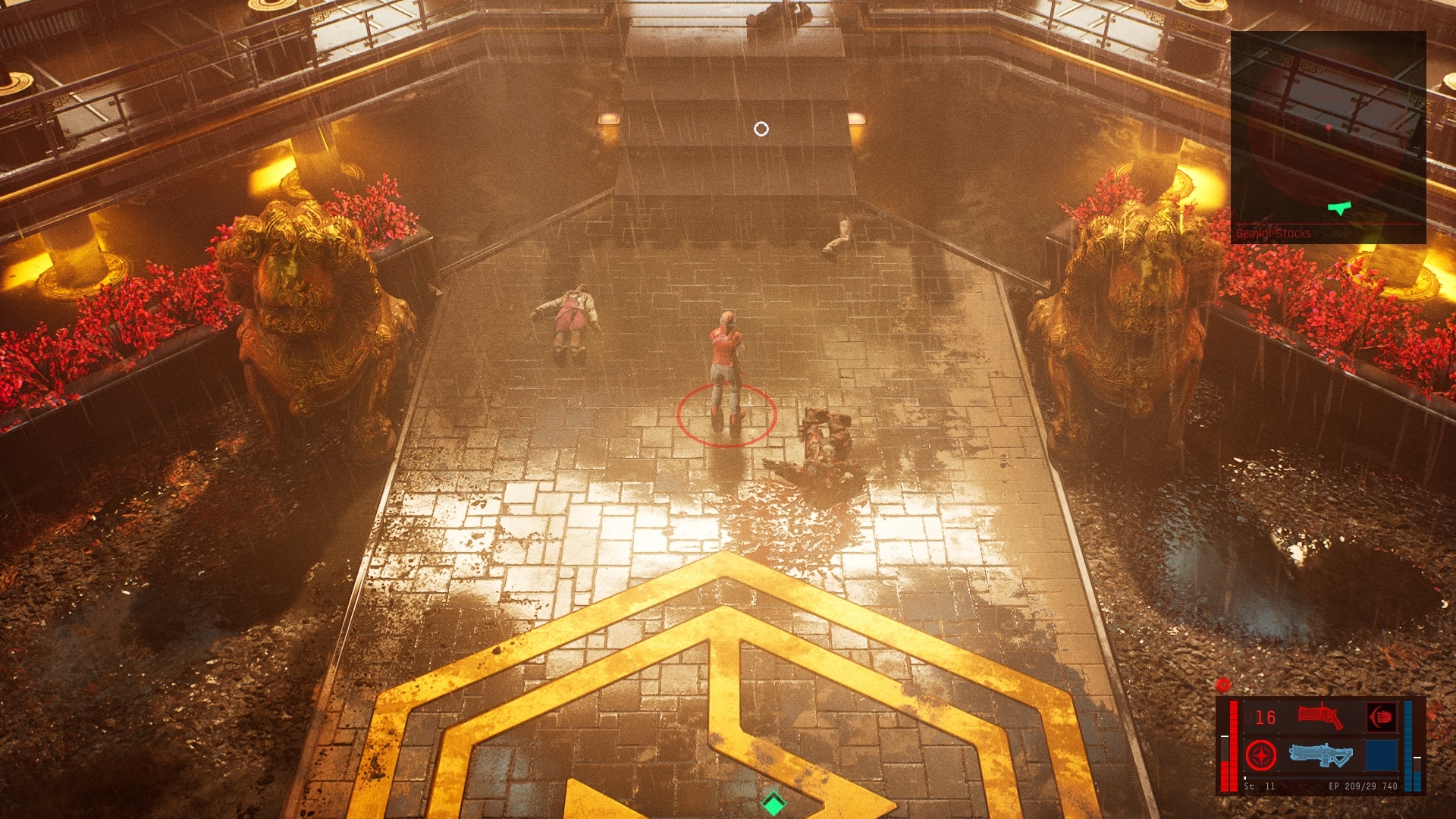
Love at second sight: The fights
The battles are also beautiful to look at, when we unleash our special abilities on the enemies, blow up cars or unpack our heavy guns like the rocket launcher. The battles not only look spectacular, but also quickly bring us into a pleasant flow of the game.
Sometimes we can’t avoid plunging headlong into the carnage and spreading our bullets to the masses of enemies. At other points we have to be more tactical: We dodge the enemies’ attacks with a roll and take cover behind containers or fences.
But even our opponents do not charge blindly at us. Ranged fighters position themselves behind obstacles or on higher platforms to gain the upper hand. So we have to hold down the right mouse button to shoot higher and hit our target.
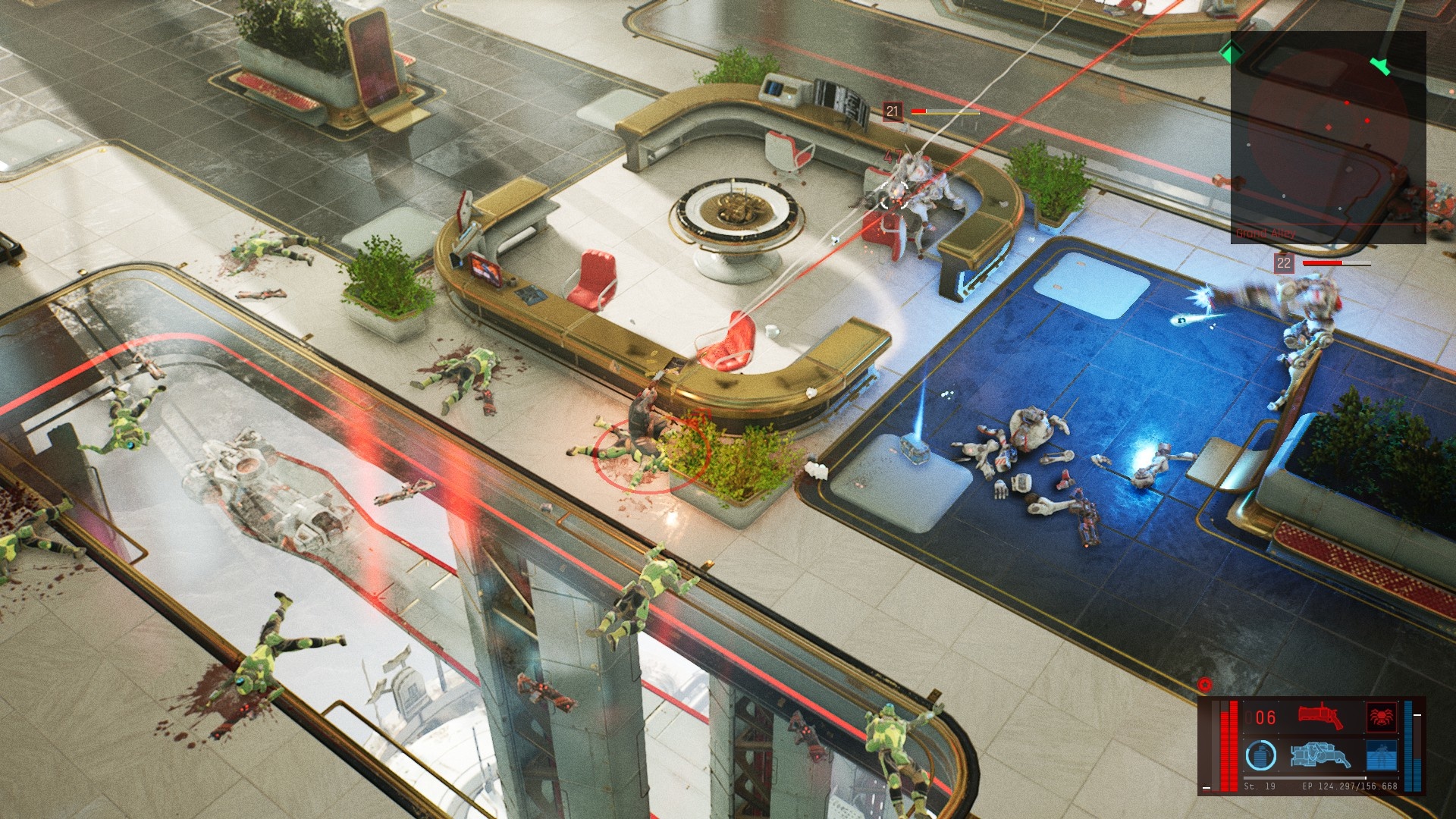
The Ascent also surprises with new enemy types throughout the game: Rojin melee fighters carry a katana, can turn invisible and teleport directly to our side. Robot spiders plague us with a swarm of smaller robot spiders that discharge near us and electrocute us. Peck engineers install turrets that keep us in their sights at all times.
Furthermore, the action role-playing game manages to skilfully use the familiar iso-perspective and thus bring even more variety into the battles. The camera rotates depending on the area and thus presents us with new challenges. Sometimes the enemies remain in the blind spot and we have to be prepared for surprise attacks.
Sometimes we run sideways through long corridors in a 2.5D view and enemies rush at us from the right and left. By the way, we can’t turn the camera ourselves. But that’s not even necessary, because The Ascent always captures the environments and the battles well.
Hack & Slay with pistol and rifle
In The Ascent we settle on one primary and one secondary weapon. We can switch between these at any time in battle with the mouse wheel. New weapons can be bought in shops, but this is rarely necessary. This is because our opponents regularly lose new guns after they die.
Especially at the beginning of the game it is a lot of fun to try out the different weapons: Do we prefer the small protector, which does less damage but shoots faster than our opponent can blink? Or do we rather opt for a slower assault rifle with more attack power?
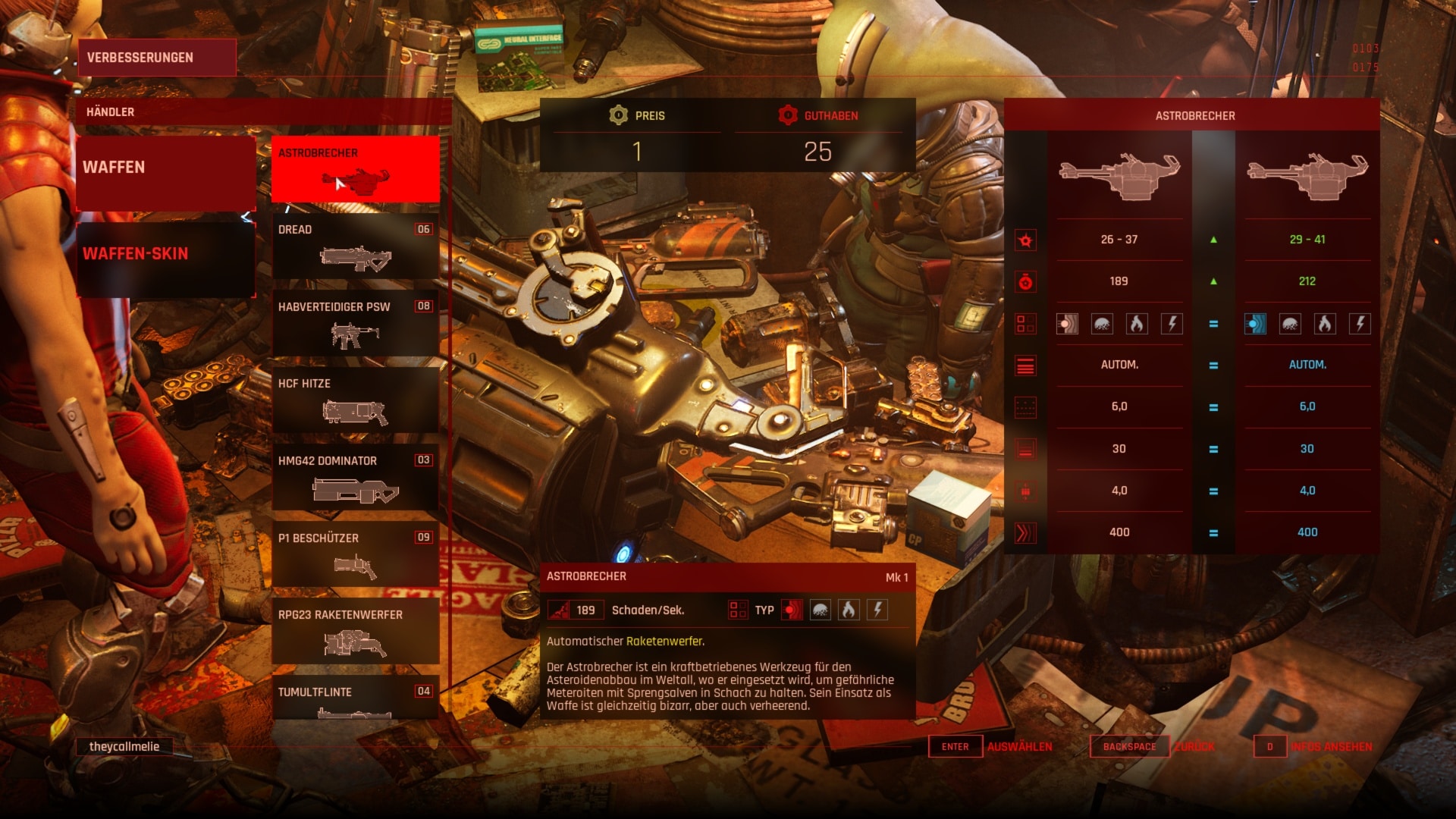
However, after only a few weapon upgrades we lose the motivation to change our shooting iron. After a good upgrade, none of the new weapons even come close to the damage number of our modified protector. So we end the game with our upgraded starting weapon.
A similar problem is found with the armour pieces. Each piece of armour has defence values against certain types of damage. At the beginning of the game, this may well make a difference in combat. If we put on armour that protects us from fire damage before a confrontation with a fire-breathing spider, we will get through the fight more easily. Sooner or later, however, we find pieces of armour that have very high values in all categories. New armour thus quickly becomes superfluous.
Special abilities: Augmentations, modules, tactical equipment
In addition to the two weapons, we equip our character with two augmentations and modules each, as befits a cyberpunk game. The modules are passive skills that let us heal faster, for example.
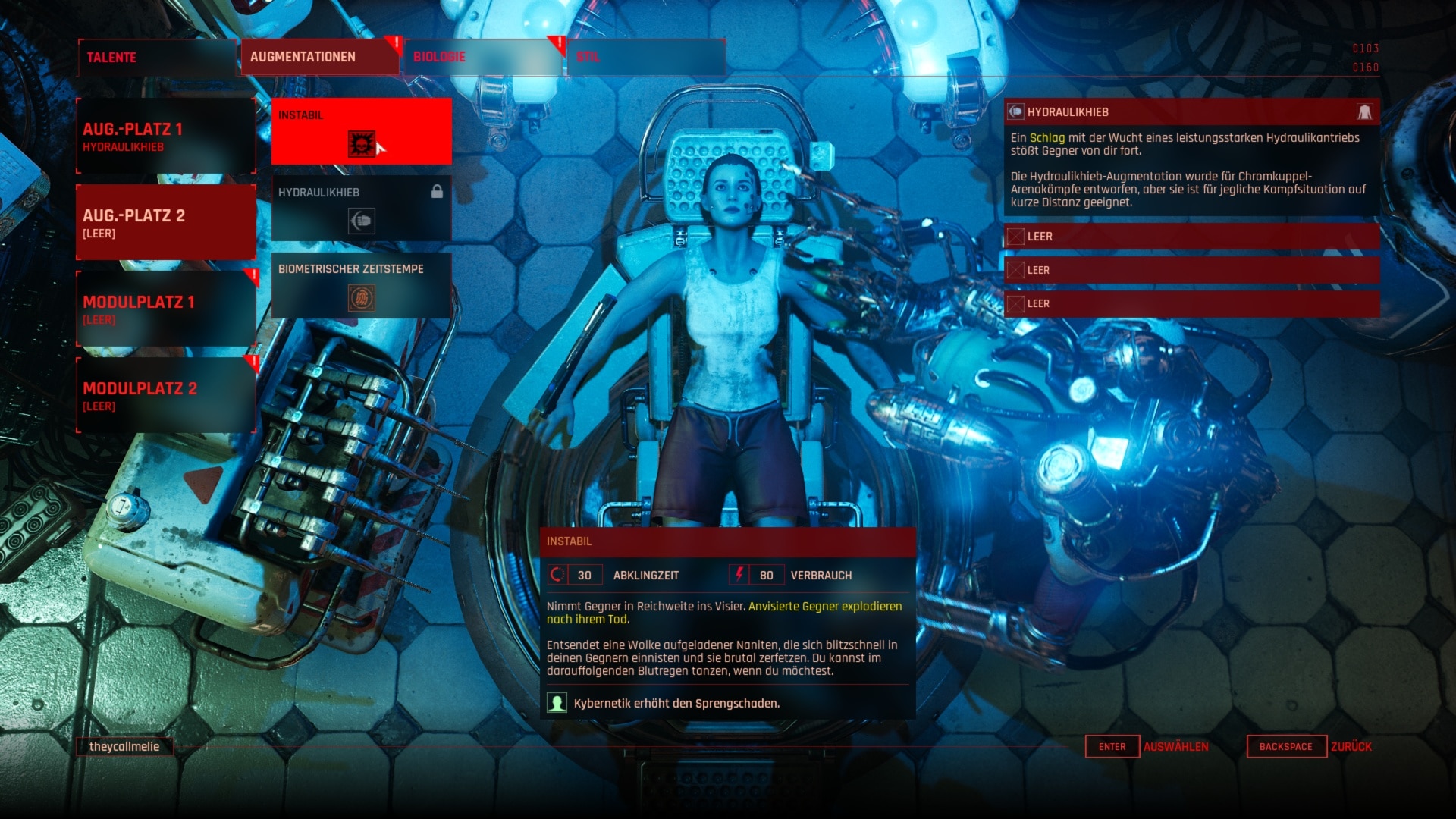
The augmentations, on the other hand, are active abilities: The “Hydraulic Blow”, for example, pushes enemies away if they get too close to us. Hyperfocus” slows down projectiles and gives us more time to dodge. And “Unstable” and the “Joyrun Dragon” – probably the most fun augmentations – make enemies explode after they die and offer a wonderful spectacle.
Finally, the tactical equipment adds spice to the battles. These are primarily classic grenades that provide plenty of area damage. Those who don’t like to handle explosive objects can also opt for a healing field, for example. Or for a pocket mech, which we can slip into for a short time.
How hard is The Ascent?
Smaller groups of opponents don’t require much tactical intuition from us. If, on the other hand, we have to deal with a horde of enemies or stronger opponents, we have to make use of the dodge roll, cover options and our abilities.
Our test version of The Ascent had only one difficulty level. This was challenging, but always fair. For example, we keep our progress after we die and don’t have to find our way back to our corpse like in Diablo. We use this to our advantage before a boss fight, can distribute skill points when we level up, swap our weapons or augmentations and then start a new attempt. Meanwhile, you can choose from three difficulty levels and also change them at any time in the game.
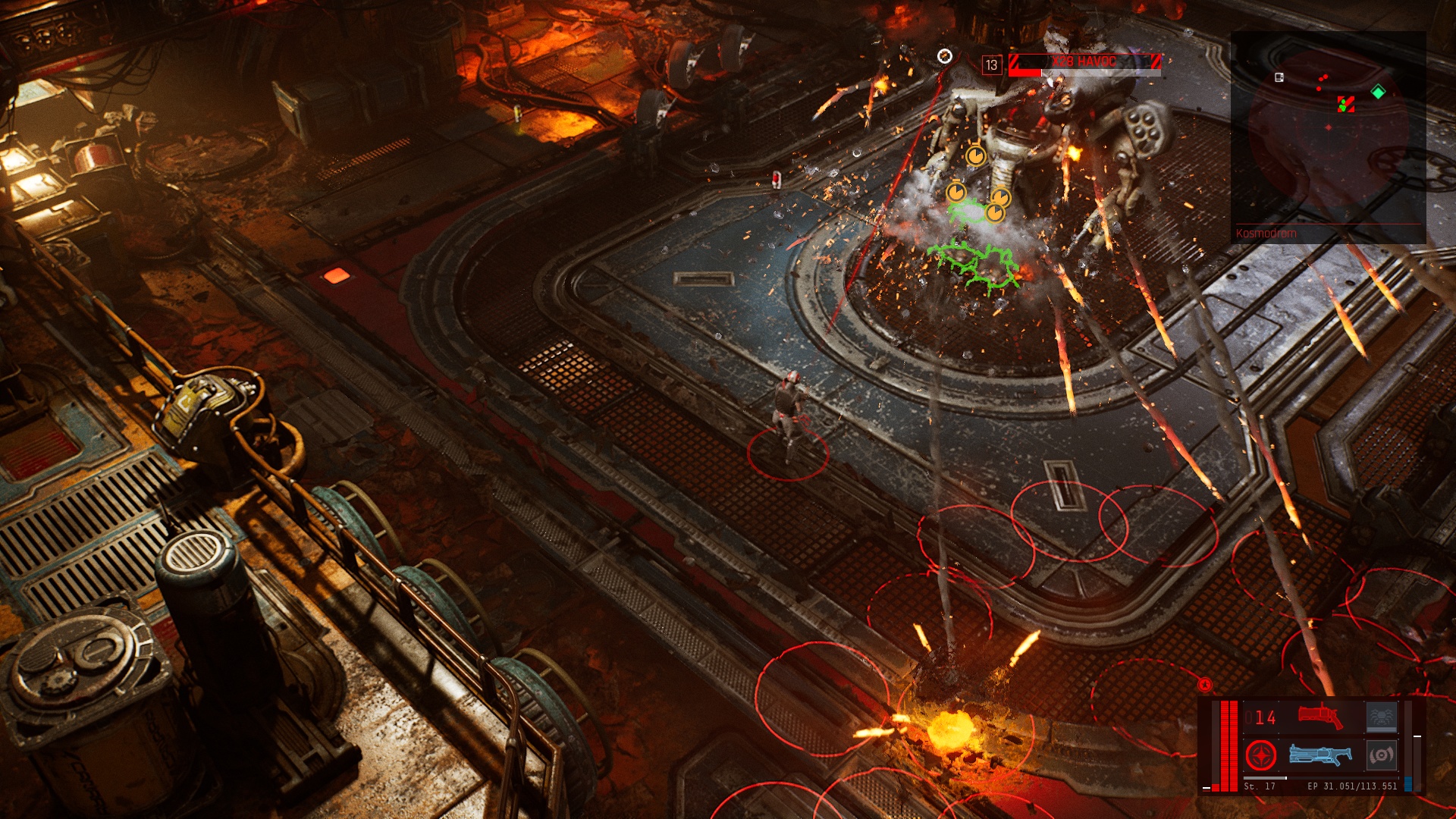
In most cases, the checkpoints are also well placed so that we spawn just before a boss fight. However, if we die on the way to a mission, the game will sometimes set us back quite a bit. Then we have no choice but to walk the long way again. Sometimes we’re lucky and don’t run into enemies we’ve already defeated, but sometimes we run into a strong group of enemies again.
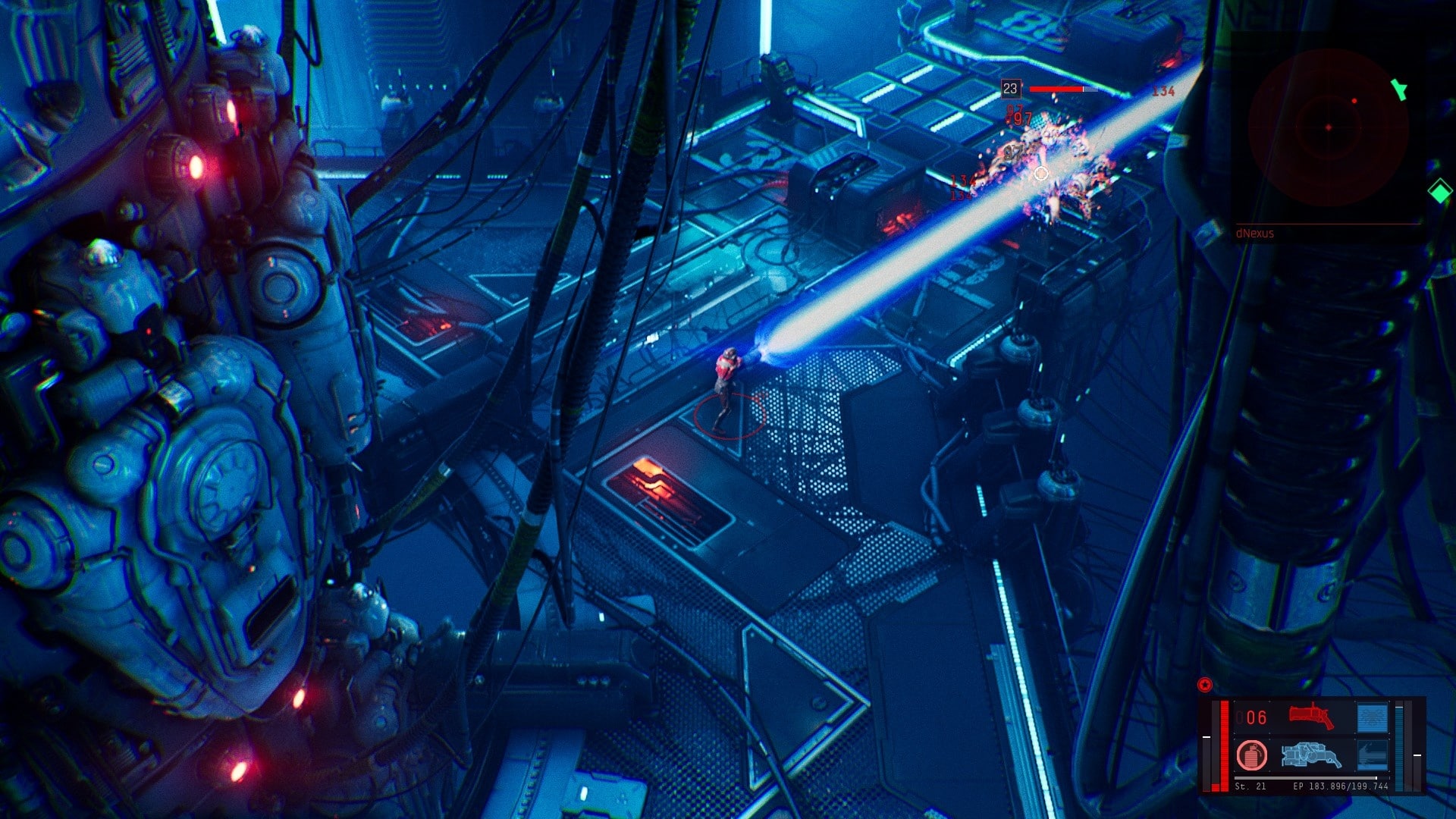
Here we run into another problem with The Ascent. Main and side quests always have a level recommendation. However, if we take on the level 13 mission with our level 15 character, it often happens that we encounter hordes of level 20 enemies on our way to the goal. Level recommendations and the actual difficulty of quests and areas often do not match. This leads to unnecessary frustration in places when you are worn down by strong enemies.
Another mission that level 5 suggests to us ends surprisingly in a dead end. It turns out: in order to complete this quest, we first have to continue playing the level 23 main quest and advance to a new area. With the October patch 3, at least this problem has been fixed. Side quests are now only available when you can actually complete them. However, this only applies to game saves that were created after the patch. In existing saves, you will still have to deal with this odyssey.
When the journey becomes a torment
Talking about odyssey: The open world of The Ascent and the attention to detail of the developers awaken in us the desire to explore the environments. It is all the more annoying that moving around in the game world is downright torture. Our character jogs along for minutes at a snail’s pace – there is no sprint button. The dodge roll provides a little relief and so we spend most of our time rolling through the filthy streets.
To travel from one area to another, there are also two fast travel systems available in The Ascent: the taxi and the underground. Travelling by underground is free, but the number of underground stations is limited.
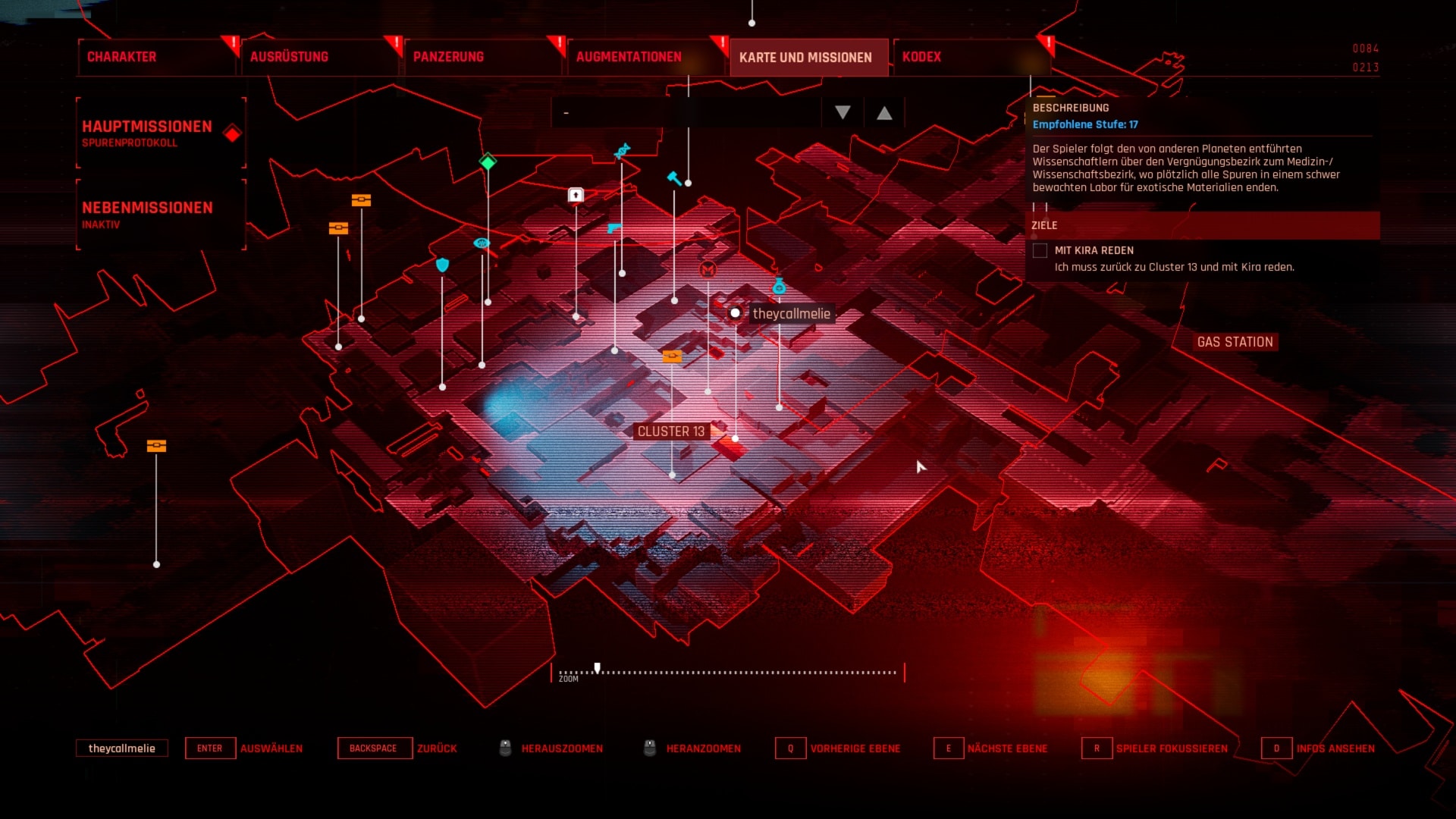
The taxi, on the other hand, costs 1,000 Ucreds and takes us to our desired destination. Well, almost. Because fast travel only works within one level. The vertical world of The Ascent, however, has three.
So if we are in the corporate area on the highest level and want to get back to the hub area Cluster 13, we call a taxi and get dropped off on the main road. From there we walk a few minutes to the lift and go to the middle level. Only here can we take a taxi to finally reach our desired area after three loading screens.
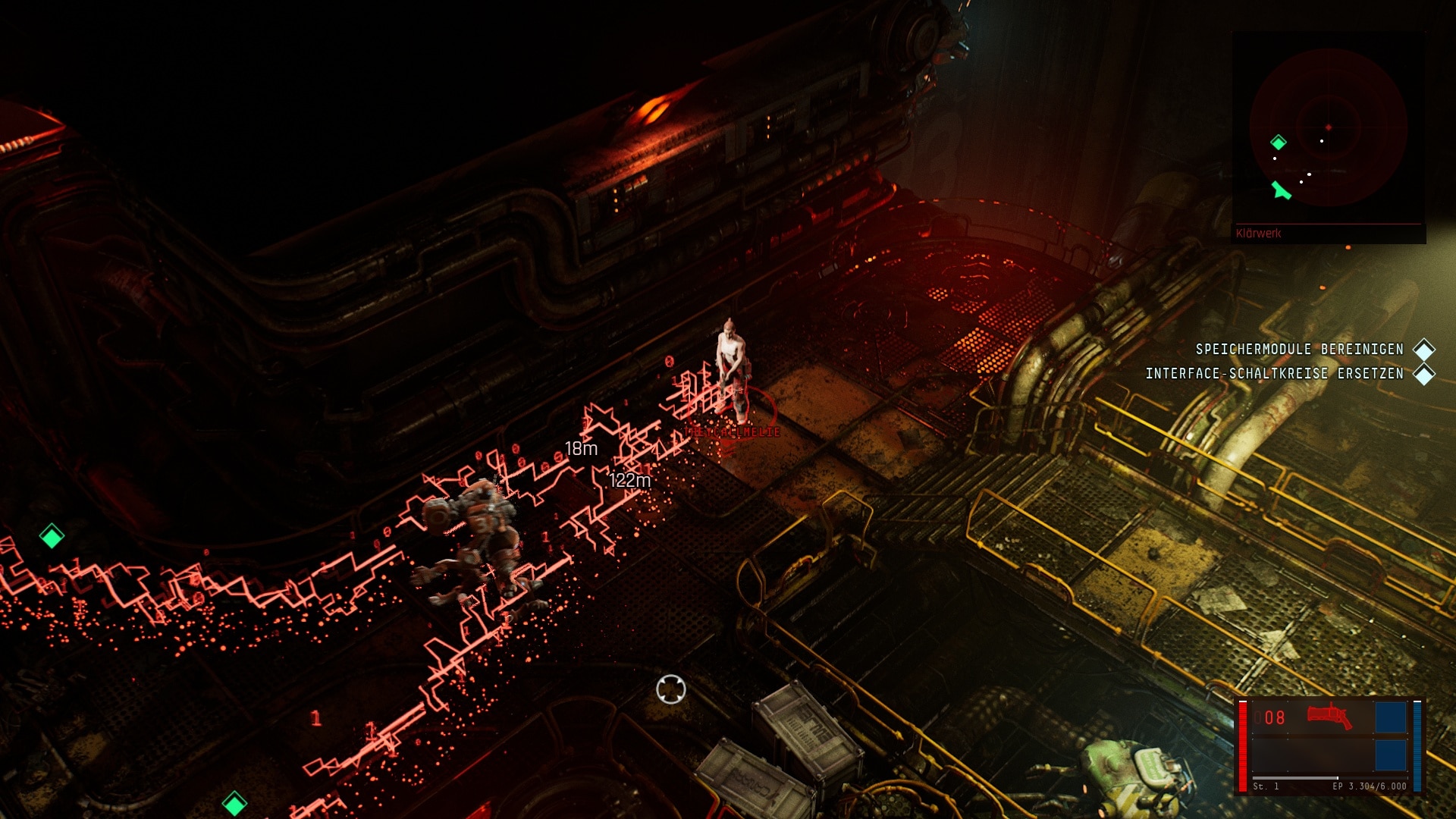
Besides crates of ucreds, occasional weapon upgrades and sporadic skill points, the world also offers little incentive to explore even the last corner of the world. The confusing map and the bogged-down navigation aid add the rest to our exploration tour. And yet the world of The Ascent is so beautiful to look at.
Cyberpunk clichés instead of poignant dystopia
While The Ascent goes all out with graphics, atmosphere and the twin-stick battles, the game shows restraint with the story. After the large corporate group The Ascent went bankrupt for inexplicable reasons, different corporations and groups now fight for supremacy. We find ourselves as so-called Indent, a contract worker, in the role of an errand boy and are passed from employer to employer.
Especially at the beginning, the story seems rather confused and inscrutable. Only the extensive codex provides clarity. In it we find background information on the most important places, characters and enemies and only then gain a deeper understanding of the world. We learn, for example, that the arcology is a huge building complex. On the lower levels live the poor workers and indents, on the higher floors the super-rich tan in real sunlight.
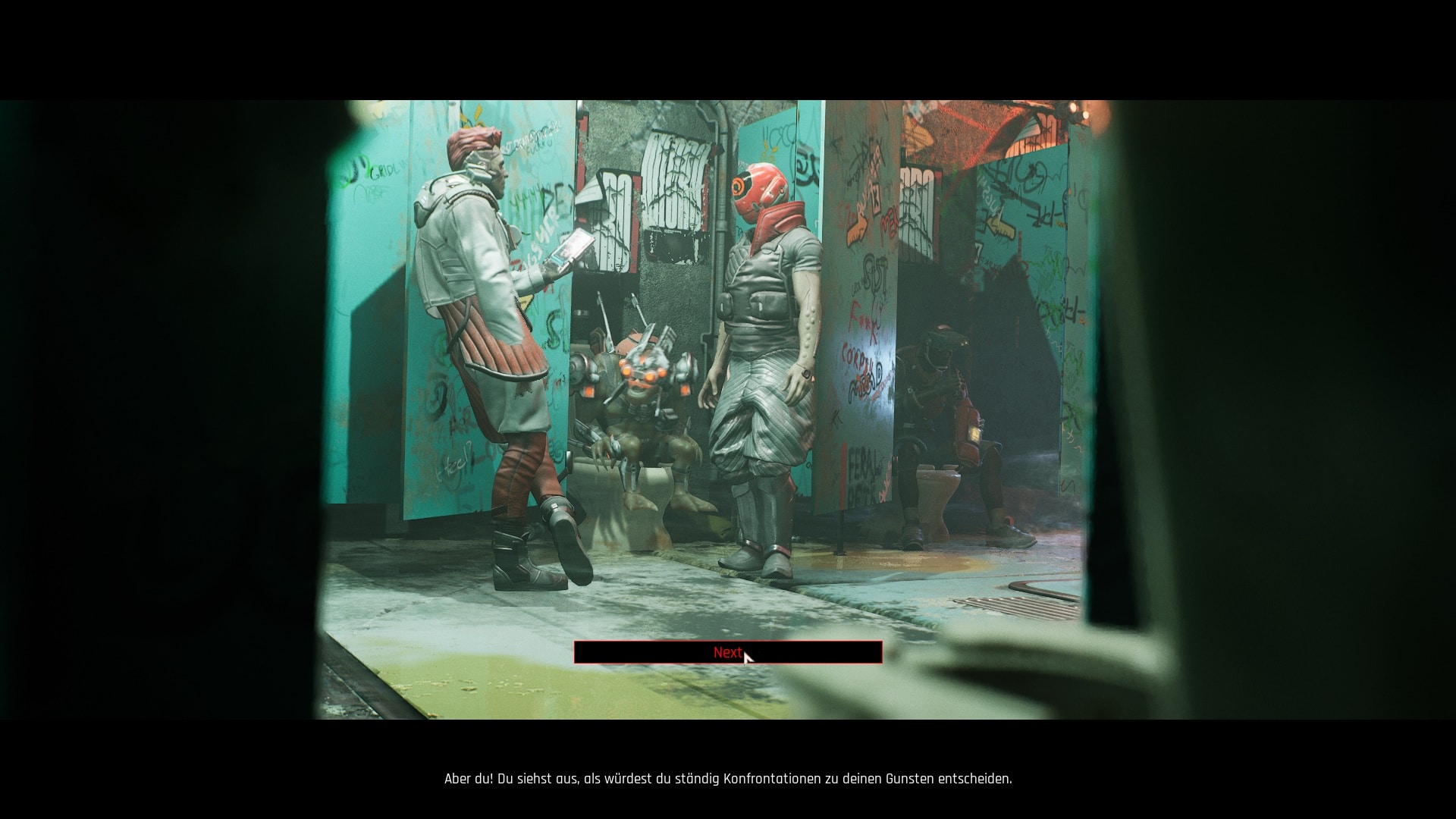
The story itself, however, fails to draw us into the dystopian world of The Ascent. The plot is predictable and picks up little momentum throughout the game. The finale is unspectacular apart from the boss fight. The characters are also so one-dimensional that not even they can carry the story.
The side quests don’t stand out with grandiose storytelling either. Most of the time we do jobs for NPCs and carry either a package, Ucreds or steroids from A to B. The few exciting approaches to side quests are so unspectacular that they don’t even carry the story. The few exciting side quests mostly come to nothing. For example, when we are supposed to find a corpse and come across mysterious experiments by scientists.
Sure, an action role-playing game could also get by with a rough framework story without depth. However, The Ascent puts a focus on the story by presenting us with a detailed codex, cutscenes and even characters set to music – but in doing so it rather underlines its weaknesses: the story uses conventional cyberpunk clichés and cannot keep up with the dense atmosphere in a direct comparison.
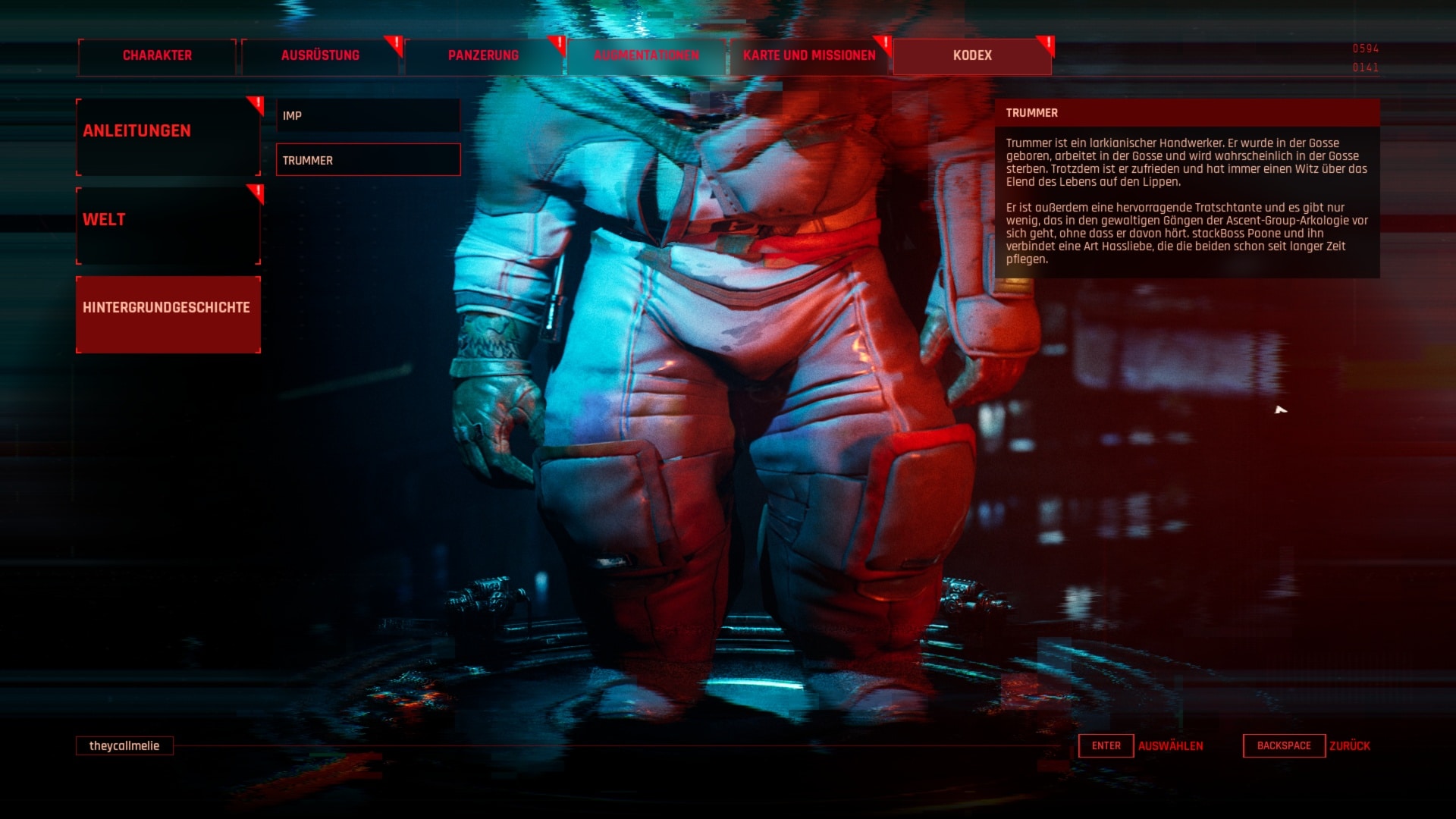
In addition, instead of bringing us closer to the characters and the action, the cutscenes emphasise the stiff and expressionless animations and character models. They simply look out of place in the insane setting.
The otherwise fantastically staged flair is also marred by the fact that we can shoot our way through the game world without any consequences. If our bullet gets into the head of an innocent person, we get a call from our boss. That’s it. There are no law enforcement officers to call on us. We don’t have to pay a fine. And at some point we don’t even pay attention to whether civilians stumble into our line of fire in the mass battles. But that takes away a big part of the world’s credibility.
The Ascent in the hardware editors’ technology check
The technology of The Ascent is a double-edged sword. In the single player of the test version, many things basically run smoothly. Smooth gaming at the highest possible level of detail under WQHD resolution is possible even with an Nvidia Geforce RTX 2060. We achieved around 64 frames per second in the selected test sequence during a short playback of the review version.
For 4K resolution including maximum details, a Geforce RTX 3060 Ti is sufficient. However, then with around 52 FPS, but without Nvidia’s secret weapon DLSS. With the AI renderer activated, we can even add ray tracing with the RTX 3060 Ti and still achieve around 50 FPS in the new DLSS mode Ultra Quality.
The ray tracing implementation looks overwhelmingly good in this, but also harbours problems. Even at high frame rates, The Ascent feels choppy with it. The only remedy is the G-Sync and Vsync image synchronisation techniques – and perhaps a day-one or future patch.
On an AMD Radeon RX 6800 XT, we achieved around 16 frames per second in 4K, including maximum detail level and ray tracing. Owners of AMD graphics cards will therefore have a hard time enjoying the real-time ray calculation for the time being. And as we know, DLSS is not available for Radeons.
Speaking of DLSS: Unfortunately, the DLSS implementation is not entirely clean. On an RTX 3090, we achieve similar FPS values across all modes (“Ultra-Quality, Quality, Balanced, Performance and Ultra-Performance”). One would expect the performance to increase massively under “Ultra Performance” in relation to “Ultra Quality”. We measured more consistent values with the RTX 2060 and RTX 3060 Ti. There, the “Performance” and “Ultra Performance” modes perform as expected. However, “Ultra Quality” delivers better performance than “Quality” and just as much as “Balanced”. So there’s still a bit of the worm in there.
The co-op mode: a tragedy
In terms of multiplayer technology, Neon Giant still has a lot to straighten out, even after the latest September patch. The Ascent offers up to four players the opportunity to dive into the cyberpunk world together in couch or online co-op. Sounds like a lot of fun in theory, but looks different in practice. In our test version, the co-op mode was almost unusable.
All the technical problems we had already noticed in the single-player mode multiplied exponentially in co-op: our teammates had to struggle with crashes in the main menu, enemies didn’t react to us, in some areas no enemies spawned at all or we simply fell through the map.
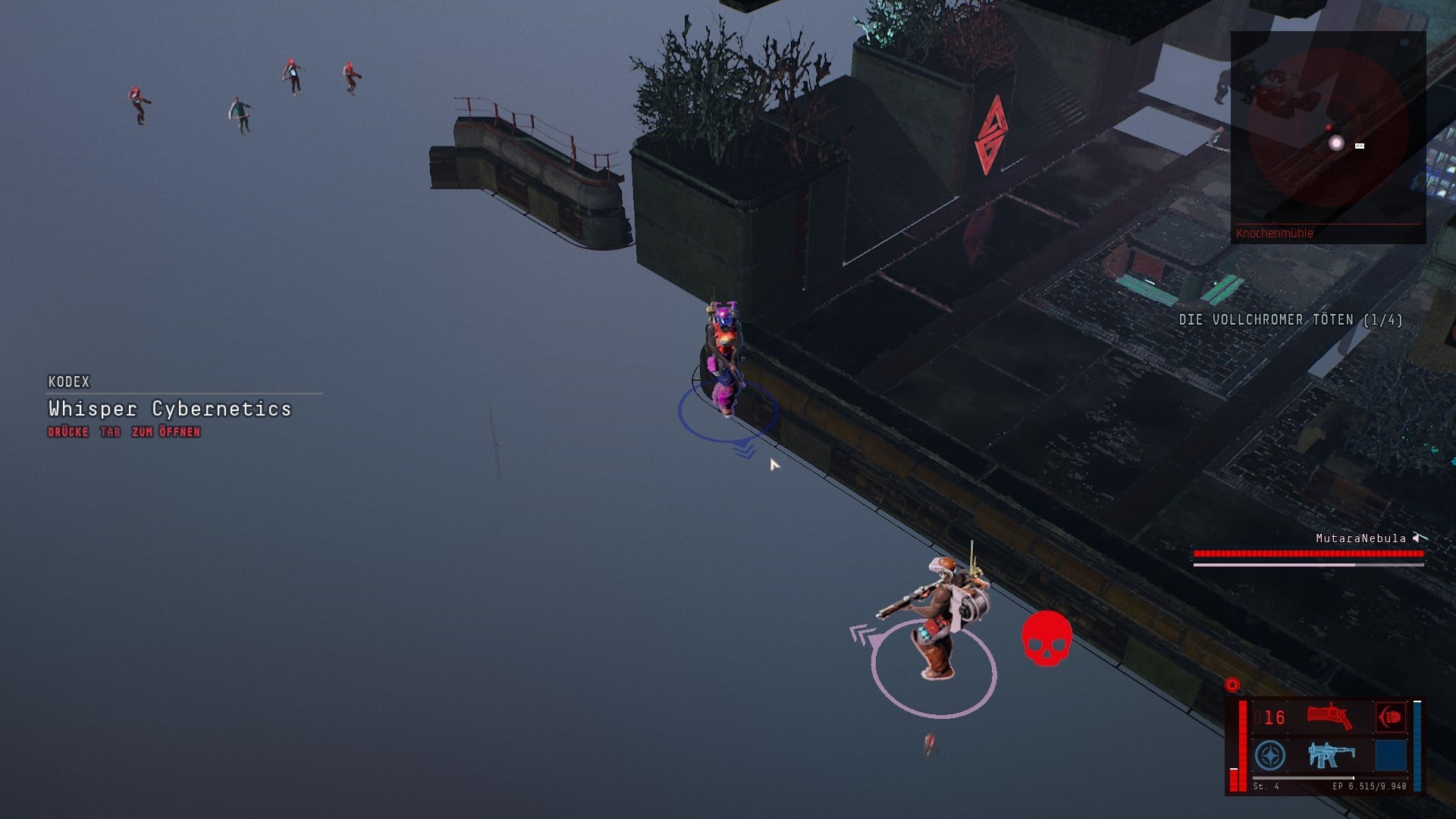
The Game Pass version in particular was criticised for its technical condition. For a long time, not only was the Day One patch missing, but also the implementation of ray tracing and DLSS.
In the meantime, many of the technical problems have been solved and both versions of The Ascent – Steam and Game Pass – are on the same level. The improvements are also clearly noticeable: in single player it no longer jerks, we don’t encounter any gamebreaking bugs and the performance generally feels better.
It should be noted, however, that the Game Pass version is always about seven days behind with the updates – but the developers have no influence on that.
Despite the patches, the co-op mode still doesn’t run smoothly. In our post-test, we still had to deal with regular crashes after the September patch, in which both players were kicked out of the lobby. Jerks during level transitions also occur from time to time. In the long run, this detracts from the fun of the game and prevents progress in the game. Therefore, we still can’t recommend the multiplayer of The Ascent without reservation.
Apart from the technical difficulties, we noticed problems in the game design of the co-op mode. When low-level characters join an advanced game, they are first leveled up a few levels. However, this is not in proportion to the scaling of the opponents. The new players don’t stand a chance against the overpowered enemies and one player alone can’t fight them either.
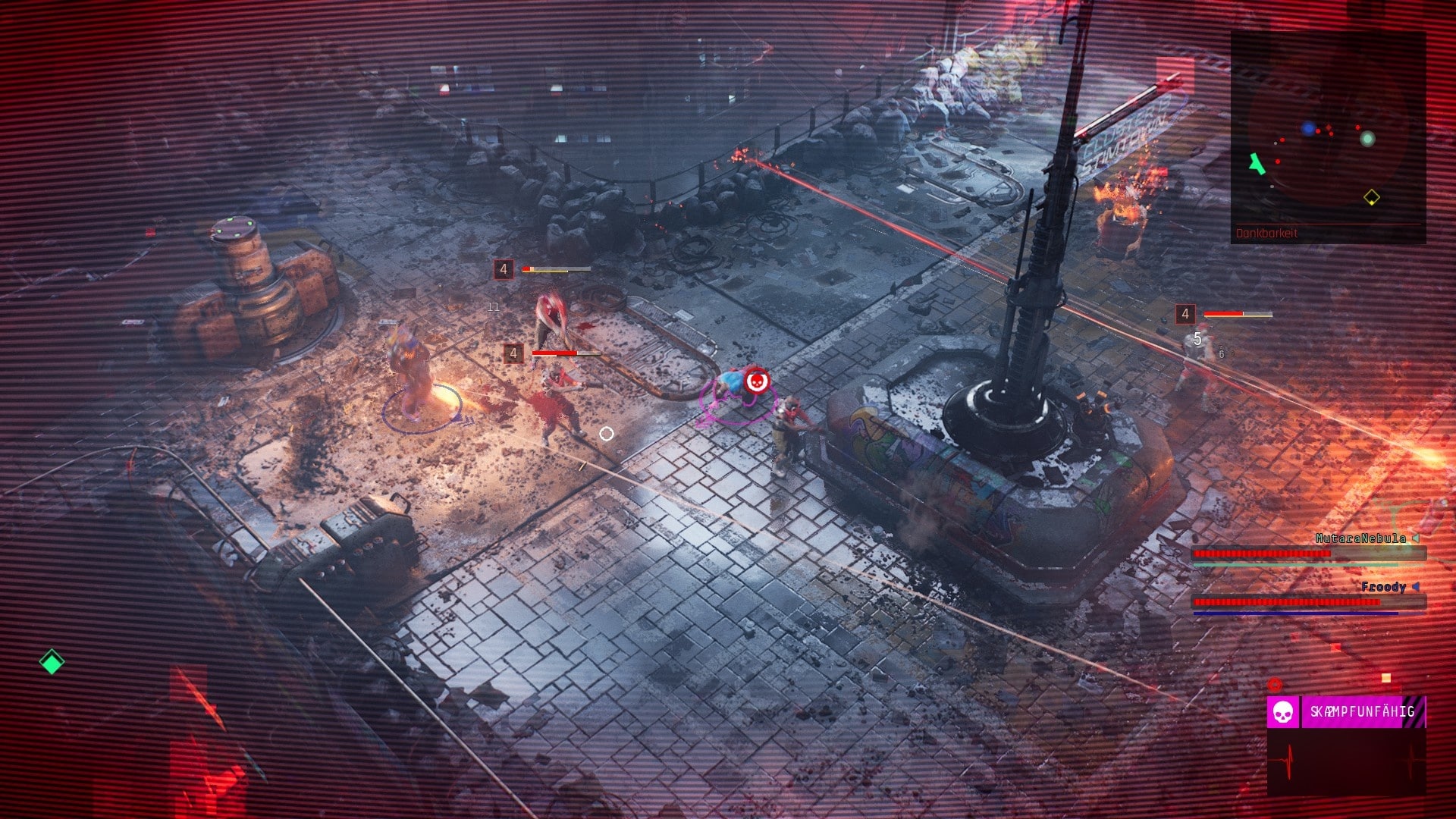
Making it more difficult is the fact that characters who have been knocked down must be revived within 30 seconds. If the timer runs out, the whole group fails. This quickly leads to frustration. In battle, there is simply not enough time to take care of wounded comrades. It’s like being asked to pause an online game in the middle of a PvP battle. Incidentally, collected items go to all party members, provided they are alive. Those crawling on the ground go empty-handed.
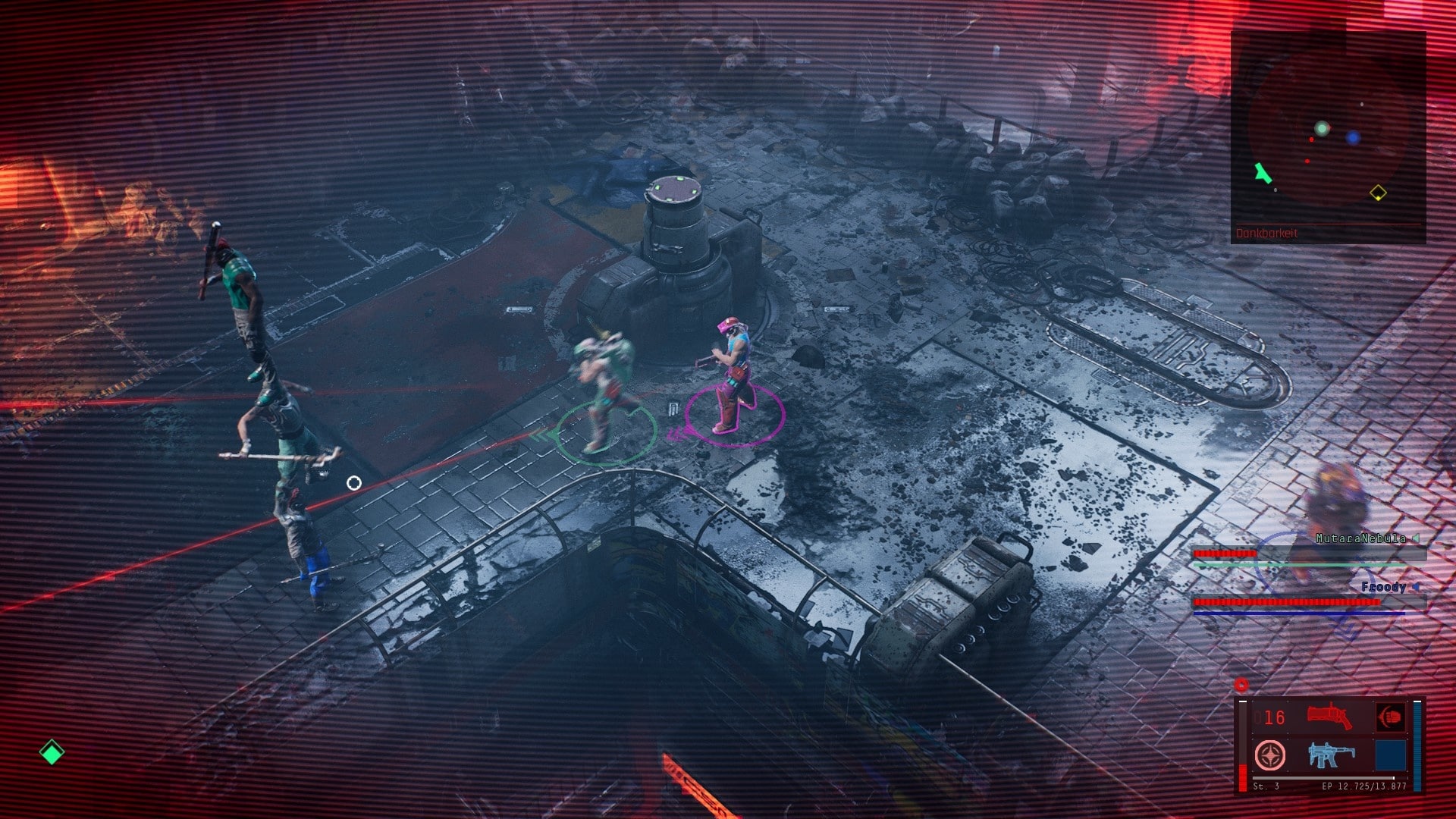
Editorial conclusion
Testing The Ascent was really a rollercoaster of emotions. I had high hopes for the action role-playing game and at first the title made a wonderful impression. Especially the dense cyberpunk atmosphere of the game and the fluid battles immediately captivated me. But little by little, the problem areas of the action role-playing game revealed themselves: moving through the world is really tedious. Neither the main quests nor the side quests could grab me. And although the world is packed with small details, I just can’t motivate myself to explore it thoroughly.
After the release of The Ascent was overshadowed by a poor technical state, a lot has happened in the last few weeks. Testing the action role-playing game was a bit like hopefully checking the fridge to see if there was a gourmet dish hiding somewhere among the opened sauces and heads of lettuce. After the first patches, the fridge was always closed in disappointment because everything remained almost unchanged. After the September patch, things look a bit better. Although the perfect favourite dish is not yet hiding in the fridge, a few delicacies can be found.
The technical state of The Ascent has improved significantly since release and especially the Game Pass version has caught up and is now on the same level as the Steam version. Only the co-op I still can’t recommend without reservation. Again and again we are plagued by crashes – that makes neither sense nor fun.
If you’re in the mood for fun and action-packed shootouts and creative skills, then definitely give The Ascent a chance. However, if you want to jump into the fray with friends, you’d better wait for a few more patches.

